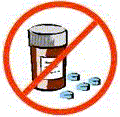 |
A Field Method for the Assay of Artesunate in TabletsNote: Fake artesunate being distributed worldwide could have potentially lethal results if used to treat Plasmodium falciparum malaria. This article, co-authored by WHO and published at their request, is being published on the PAHO web with the purpose of warning clinicians and pharmacists working with malaria patients in the Region of the Americas on how to detect the counterfeit drug and thus avoid its use.(Originally published in Mekong Malaria Forum [MMF], No. 7, 1999, and reproduced here with the permission of Dr. Allan Schapira of WHO, co-editor of the issue) |
|
After the discovery of widespread fake artesunate in Cambodia, USAID requested the Centers for Disease Control and Prevention, Atlanta, USA, to analyze some suspected counterfeit artesunate tablets. Since the analysis revealed no detectable levels of the artesunate in these particular tablets, it was decided to develop a simple method for detection of artesunate in a tablet. Consequently, a novel method was developed and presented as a poster at the 11th International Symposium on Pharmaceutical and Biomedical Analysis in Basel, Switzerland, in May 2000. The method and details of the technique will be published in an upcoming issue of the Journal of Pharmaceutical and Biomedical Analysis. The Mekong Malaria Forum is indebted to Michael D. Green, for permission to present a summary of the poster presentation which was authored by M.D. Green, D.L. Mount, and R.A. Wirtz, Division of Parasitic Diseases, Centers for Disease Control and Prevention, Atlanta, Georgia, USA; and N.J. White, Faculty of Tropical Medicine, Mahidol University, Bangkok, Thailand. | |
Introduction
Artesunate is a semi-synthetic derivative of artemisinin, a naturally occurring sesquiterpene endoperoxide. It is difficult to detect and identify by standard spectrophotometric methods. The standard method used to determine artesunate in tablets involves high-performance liquid chromatography (HPLC). In many countries, such equipment is not available.
Antimalarials such as chloroquine and sulfadoxine have particular chemical groups that react with certain compounds to give colour reactions. Artesunate does not possess these reactive groups, but an alkali-decomposition product of it can react with diazonium salts to produce a visually distinct yellow product. This product absorbs visible light at 420 nm and the absorbance intensity corresponds linearly to the artesunate concentration.
Quantitative Determination of Artesunate in Tablets
It was found that optimum yield of ARTS290, the alkali-decomposition product occurs after incubation in 1 N NaOH. This product reacts with Fast red TR salt (a diazonium salt) to produce a colored reaction product (ARTS420) which can be measured by spectrophotometry at 420 nm. The color reaction takes place under a wide range of pH, but is more specific for artesunate at acidic pH.
Quantitative analysis of artesunate tablets can be accomplished by measuring the absorbance of the ethyl acetate extracts. Measurements can be made in the field with the aid of a hand-held portable photometer fitted with a 420-nm filter.
Specificity
The method was evaluated for artemisinin, artemether, chloroquine, quinine, primaquine, sulfadoxine, and pyrimethamine at pH 4, 6, and 8. It was found that the method is specific for artesunate at a pH of 4 (see figure in box). At pH>6, the method has possible applications for colorimetric verification of other antimalarial drugs such as artemisinin, primaquine and sulfadoxine.
|
Field Methods for Testing Artesunate Tablets Standard Test
Quick Test
* Sigma Catalogue (USA) 1997: Cat. No. F2768, Hemi (zinc chloride) salt, practical grade. Dye content: approximately 15%. |
Only 1% of the tablet (assuming 50mg artesunate) is required for the assay, so the remaining tablet can be used as an antimalarial. Fast TR Red Salt can be requested temporarily from the office of the WHO Representative in Cambodia. We look forward to receiving articles from readers about their experience with the tests. WHO considers developing a kit for this purpose.
Margin Highlights: It was found that the method is specific for artesunate at a pH of 4.